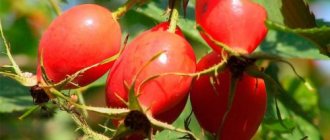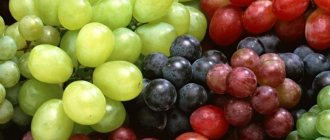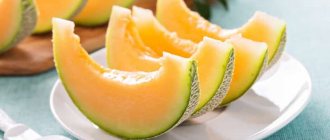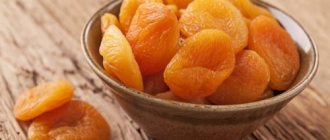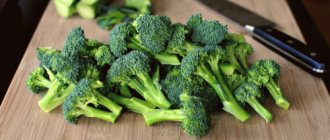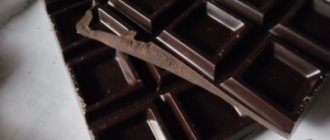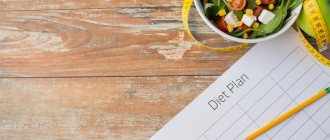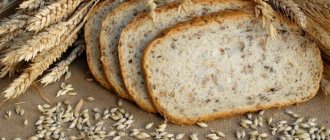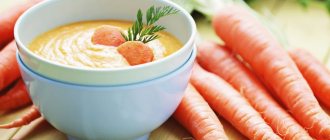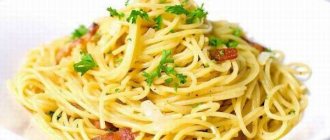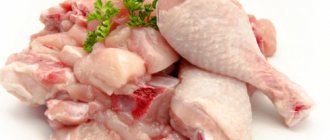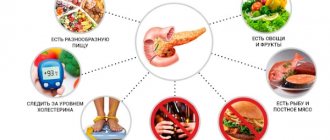The pancreas is a small organ of the digestive system, which is still capable of providing a person with many unpleasant moments, especially if there are problems with its functioning. Then the patient is forced to give up most of the previously consumed foods. If you have problems with the pancreas, you must adhere to a special diet called 5P. This will help avoid the occurrence of acute pancreatitis or the transition of chronic to acute form. There are a number of prohibitions on the use of certain foods that should be followed in case of chronic pancreatitis during recovery after an exacerbation or regardless of it. First of all, the ban applies to alcoholic beverages and certain medications. Restrictions are also introduced regarding fruits and vegetables. What can you eat when your pancreas hurts?
Is it possible to eat bananas for pancreatitis?
Bananas can be consumed for pancreatitis, but only in compliance with a number of rules. You should not eat fruits during a period of exacerbation of pathology (when the patient is prescribed therapeutic fasting). It is not recommended to introduce the product into the diet before bedtime. The fruit is high in calories. It is prohibited to use it in large quantities for pancreatitis.
Other nuances of eating bananas for pancreatitis:
- You can reduce the risk of side symptoms by including bananas in recipes for other dishes and drinks (cocktails, casseroles, porridges);
- You can reduce the load on the digestive tract if you eat fruit after heat treatment.
Effect on the pancreas
When consumed correctly, bananas have a positive effect on the pancreas. The pulp of the fruit is able to absorb and remove excess gastric juice from the body. This property, combined with the presence of pectin and starch in fruits, provides a therapeutic effect for pathologies accompanied by high acidity (for example, some forms of gastritis). In addition, the pulp, when it gets on the mucous membranes of the digestive organs, envelops them. The risk of pancreatic irritation and additional stress is greatly reduced.
Reviews from nutritionists
— Diet is necessary to normalize the function of the pancreas, create gentle conditions for the functioning of the stomach and intestines, reduce the load on the gallbladder, and also prevent non-alcoholic fatty liver disease. Fried, hot and very cold foods, and coarse fiber should be excluded from the diet. At the same time, it is worth enriching the diet with vitamins and lipotropic substances (substances that prevent excessive accumulation of fats in the liver). It is recommended to eat dishes steamed, boiled in water and baked, preferably pureed or chopped, advises Dmitry Bobunov.
Beneficial features
Bananas contain many useful microelements and vitamins. Their high concentration allows the fruit to be included in dietary programs for the treatment of diseases of the digestive system. Bananas are rich in complex and simple carbohydrates, vegetable proteins, potassium, calcium, iron, magnesium and vitamins of groups B, PP, A, C, E.
A distinctive feature of this product is the presence of tryptophan (the so-called “happiness hormone”), which has a beneficial effect on the nervous system.
Beneficial properties of fruits:
- Banana has a lot of beneficial properties for human health: removing excess fluid from the body (diuretic effect);
- preventing and reducing the intensity of heartburn;
- restoration of hemoglobin levels in the presence of anemia;
- reducing the risk of dysbacteriosis;
- acceleration of tissue regeneration processes of the digestive organs;
- beneficial effects on the cardiovascular system;
- antiallergic effect;
- increased peristalsis of the digestive organs;
- preventing swelling due to fluid accumulation;
- reducing the intensity of nausea in diseases of the digestive tract;
- beneficial effect on the nervous system;
- slowing down some inflammatory processes in the body;
- prevention of malignant tumors;
- choleretic effect;
- prevention and elimination of constipation;
- restoration of the microflora of the digestive system.
Features of consumption
Diet No. 5, prescribed for pancreatitis, implies many restrictions in the diet. Nutrition principles are aimed at creating minimal stress on the digestive organs and pancreas. Bananas are good for the body, but they contain plant fiber. In order for the fruits to be digested faster and easier, it is recommended to pre-grind their pulp.
When choosing fruits, it is important to give preference to ripe and high-quality options. There should be no signs of rotting or black stripes (spots) on the peel.
Products of plant origin for diseases of the pancreas are not recommended to be eaten raw. Considerations for use:
- unripe fruits can provoke an attack of pancreatitis;
- green fruits cause excessive gas formation and flatulence;
- You are allowed to consume no more than one medium-sized banana per day;
- It is recommended to consume the fruits in the morning (the feeling of hunger will decrease and a supply of energy for the day will be provided).
With exacerbation of chronic pancreatitis
Chronic pancreatitis is accompanied by remissions of varying durations, but periodically the pathology worsens. During such periods, eating fresh fruit is prohibited. A few days after the attack has stopped, you can introduce baked bananas into your diet. Heat-treated fruits will not cause harm to the digestive system. As an alternative to fresh bananas, you can use baby puree based on this fruit.
With the development of acute pancreatitis
During the period of exacerbation of pancreatitis, inflammatory processes reach their maximum intensity. A mandatory means of alleviating the patient's condition is therapeutic fasting. Food products are introduced into the diet gradually and only a few days after the attack has stopped. Fruits, including bananas, can be included in the menu only from the tenth day of therapy.
It is important to follow several rules - consume the product in minimal quantities, and be sure to heat treat it.
Bananas in the acute period and during remission
Recommendations for eating bananas during the acute period and during remission of pancreatitis are radically different. In the first case, the introduction of fruits into the diet is strictly prohibited. Fruits (especially fresh ones) only cause harm to the digestive system. In the second case, subject to the rules of the diet, this type of fruit will only have a beneficial effect on the body.
Alcoholic drinks for inflammation
If your pancreas hurts, fried meat is simply contraindicated!
The pancreas, compared to other organs of the digestive system, is most susceptible to the toxic effects of alcohol. It, unlike the liver, does not contain an enzyme that can break down an alcoholic drink. Often (about 40% of cases) acute pancreatitis develops after a feast with heavy drinking and unhealthy fatty or fried foods.
Drinking alcohol during chronic pancreatitis leads to repeated cases of acute pancreatitis, which affect the functionality of the gland and lead to its anatomical destruction. And, unlike the liver, it does not have the ability to recover.
Each case of alcohol consumption leads to an increase in the number of fibrosis lesions, which simply means that the gland is rotting.
Sugar content in bananas
Violation of the functional state of the pancreas provokes a decrease in insulin levels. The hormone is necessary for the processing of glucose. Patients with pancreatitis need to monitor their blood sugar levels. In addition, diabetes mellitus is one of the causes of inflammation of the pancreas. Bananas contain natural sugars. When consumed adequately, fruits are not capable of causing harm to the body and digestive organs.
Possible complications
Negative symptoms are caused by improper consumption of fruits and the body’s inability to absorb their plant components. Due to these individual characteristics, complications may develop:
- flatulence;
- painful sensations;
- feeling of bloating.
Any of these manifestations complicates the treatment of pancreatitis and contributes to the development of a chronic form of the disease. With prolonged inflammation of the pancreas, side effects can cause an exacerbation of the main symptoms.
In what form can it be used?
For pancreatitis, bananas should be consumed following a number of rules. The introduction of the product into the diet should occur gradually. The risks of adverse reactions from the digestive system are minimal when consuming thermally processed fruits. Bananas can be used to make purees, soufflés, cottage cheese casseroles, and can also be added to the menu baked. You can prepare drinks from this product - juices, cocktails.
Bananas are one of the highest calorie tropical fruits.
Can I have fresh bananas?
Fresh fruits are allowed to be introduced into the diet only during periods of stable remission of pancreatitis. You can use puree as “test dishes”. The pulp is mashed with a fork or crushed in a blender. In terms of vitamin composition, such a product will not be inferior to fresh fruit, but its digestion by the digestive system will require less energy.
Breakfast items
Bananas can be used to prepare many delicious and vitamin-rich breakfast dishes. Fruit can be used as a main or additional ingredient.
When consuming such banana dishes, it is important to follow the diet rules. Fruits should not be present in the diet in too large quantities.
Cottage cheese casserole:
- To prepare the dish you will need two bananas, a glass of semolina and 500 g of cottage cheese.
- Combine semolina and cottage cheese.
- Slice the bananas (you can put slices on top of the curd mixture or mix the mass).
- It is recommended to bake the dish for about fifteen minutes.
Rice pudding with banana puree:
- Boil the rice.
- Puree the pulp of one banana (using a grater, blender or fork).
- Mix the ingredients.
- To give the dish an airy consistency, the mixture can be beaten with a mixer.
Healthy cocktails
Banana juice is not highly acidic, contains no fat at all, and does not have a sharp, irritating taste. It is not recommended to use whole milk for preparing cocktails for pancreatitis. This product is classified as a prohibited product. You can use fermented baked milk, yogurt, kefir or skim milk. To reduce the risk of a negative reaction from the digestive system, you can dilute dairy products with water.
Cooking method:
- Chop the banana (you can grate it or chop it in a blender).
- Combine the fruit with a glass of your chosen dairy product.
- The cocktail can be re-blended with a blender.
Banana juice for pancreatitis
Industrially produced juice contains harmful substances - flavors, dyes, preservatives. The use of such a product for pancreatitis is not recommended. Banana juice can be prepared at home. The drink will be natural and will not cause harm to the digestive system. The main problem with making juice is its small quantity (squeezing liquid out of fruit is extremely difficult). To facilitate the preparation of the drink, it is allowed to supplement the preparation with other ingredients. For example, carrot or apple juice.
Cottage cheese is recommended in the diet for pancreatitis. Read more about what cottage cheese should be like to meet dietary requirements for pancreatitis here >>. Dietary dishes made from cottage cheese.
Baked bananas for pancreatitis
There are two ways to bake bananas: with or without the peel. This dish is useful for pancreatitis. It does not provoke increased gas formation. The negative properties of plant fiber are neutralized by heat treatment of the fruit. If there is no allergic reaction, the dish can be supplemented with honey, nuts or cinnamon.
Baking without peel:
- Cut each fruit lengthwise into two halves.
- If desired, sprinkle the workpiece with additional ingredients.
- Wrap each fruit half in foil.
- Bake the workpiece for ten minutes (placing it on a baking sheet).
Baking in peel:
- Rinse bananas thoroughly.
- Make small cuts in the peel.
- Additional ingredients can be placed into the slits.
- The baking time is the same - ten minutes.
Restrictions
The introduction of bananas into the diet requires strict adherence to certain rules:
- Before eating, the fruit is cut very finely with a knife or ground through a sieve.
- Heat treatment is carried out by baking or steaming.
- You can eat no more than one banana per day; you should not overload your digestive system.
- Breakfast is the best time to eat fruits as they take quite a long time to digest. Taking it in the morning ensures the absorption of nutrients and provides energy.
- The fruits with which bananas can be combined are determined by the attending physician. You cannot prepare fruit mixtures yourself.
- Ensure the availability of special medications that may be needed in the event of the development of pain or other negative consequences.
- If side effects occur, or a feeling of sharp pain in the stomach or neck, fruits are immediately excluded from the diet.
If you follow the recommendations, you can eat bananas for pancreatitis. The gradual introduction of fruits into the diet is allowed a week after the acute pain has subsided. Banana is a storehouse of vitamins, microelements, and dietary fiber. Despite good absorption, it is not recommended to eat more than one fruit per day, pureed or after steaming.
Dried bananas can be used for cooking. They make a very useful compote. Dried fruits improve the taste of porridges, puddings, and soufflés. Delicious and healthy cocktails are prepared from banana and fermented milk drinks. To prepare, you need to grind half the fruit in a blender and mix with 0.5 liters of kefir, yogurt or fermented baked milk. There is only one requirement - fermented milk drinks must be fresh. Do not mix banana puree with milk. When the pancreas is inflamed, it is poorly absorbed and can cause unpleasant symptoms.
How bananas can affect your health
The texture of the yellow fruit envelops the stomach, helps normalize digestion and makes stool easier. The effect of bananas on the body of a patient with pancreatitis can be different. If you consume fruits following the rules of the diet, they will not cause harm to the body. The benefits of fruits will include replenishing vitamins, removing excess fluid and accelerating tissue regeneration processes.
The fruits have a special effect on the nervous system. The positive properties of the product change to negative if the diet recommendations are violated. For example, if fruits are not introduced into the diet in a timely manner, if they are processed incorrectly or consumed unripe.
The harm of bananas lies in the following properties:
- excessive gas formation;
- the appearance of frequent belching;
- diarrhea;
- spasms;
- flatulence;
- exacerbation of an attack of pancreatitis.
Features of preparing dietary dishes
Therapeutic nutrition must be individualized. However, there are general principles of culinary processing of products to reduce the amount of irritants. Mechanical: fiber, lignin, hemicellulose in plant products, connective tissues in animal products. Chemical irritants are certain substances that increase the activity of the digestive glands and the entire gastrointestinal tract.
The following should be excluded from the diet during diet therapy for pancreatitis:
- mushrooms, raw radishes, radishes, garlic and onions, rich in mechanical irritants;
- salted, smoked, dried fish, containing many chemical irritants;
- meat, mushroom and fish broths rich in extractive substances;
- alcohol is a strong chemical irritant.
The content of mechanical irritants in products decreases during grinding and mild heat treatment (boiling, stewing). After being freed from cartilage and veins, the meat is thoroughly chopped. The cereals are pre-soaked and boiled in water. Frying is not allowed, as this heat treatment creates a harmful crust. Boiling is preferable. The content of chemical irritants in products decreases when cooked in water or steamed.
Unfortunately, any culinary processing leads to a decrease in the amount of vitamins and mineral components in food.
Stewing occupies an intermediate position between frying and boiling. With this method, new chemical irritants are not formed, but those already present in the products may remain. The advantage of stewing is the better preservation of bioactive substances in food after heat treatment.
Contraindications
Bananas, despite the beneficial properties of the fruit, are strictly prohibited from being introduced into the diet in the presence of certain pathologies. These include diabetes mellitus and allergic reactions to plant fiber. It is not recommended to eat fruits in patients who have had a heart attack or stroke. The presence of fruits in the menu should be reduced in case of coronary heart disease, thrombophlebitis and blood clotting abnormalities. If a patient has such pathologies, then there will be no benefit from bananas even if consumed correctly.
Possible risks
Bananas should not be consumed at the same time as other foods. For example, if banana pulp combines with protein food in the stomach, the digestion process will slow down. The fruit will provoke fermentation processes.
The consequences will be increased gas formation and toxic effects on the digestive system. The inflammatory process in the pancreas will worsen.
Complications
Deterioration in health after eating bananas can be caused by individual intolerance to the fruit or improper introduction of them into the diet. In both cases, fruits will cause gas formation, flatulence, pain in the digestive organs and bloating. Treatment of pancreatitis with such side symptoms will be difficult. If the pathology has taken a chronic form, then undesirable reactions of the body will provoke attacks of exacerbation of the disease.
Video on the topic: 10 interesting facts about bananas
Compatibility with other products
It is best to consume bananas on their own, in between meals. They are incompatible with protein products. Eating protein foods and bananas at the same time significantly slows down the process of digestion and absorption of food.
The fruit provokes fermentation. As a result, more gases are formed and intoxication of the gastrointestinal tract develops. Under the influence of unfavorable factors, exacerbation of inflammatory diseases of the digestive organs is possible.
